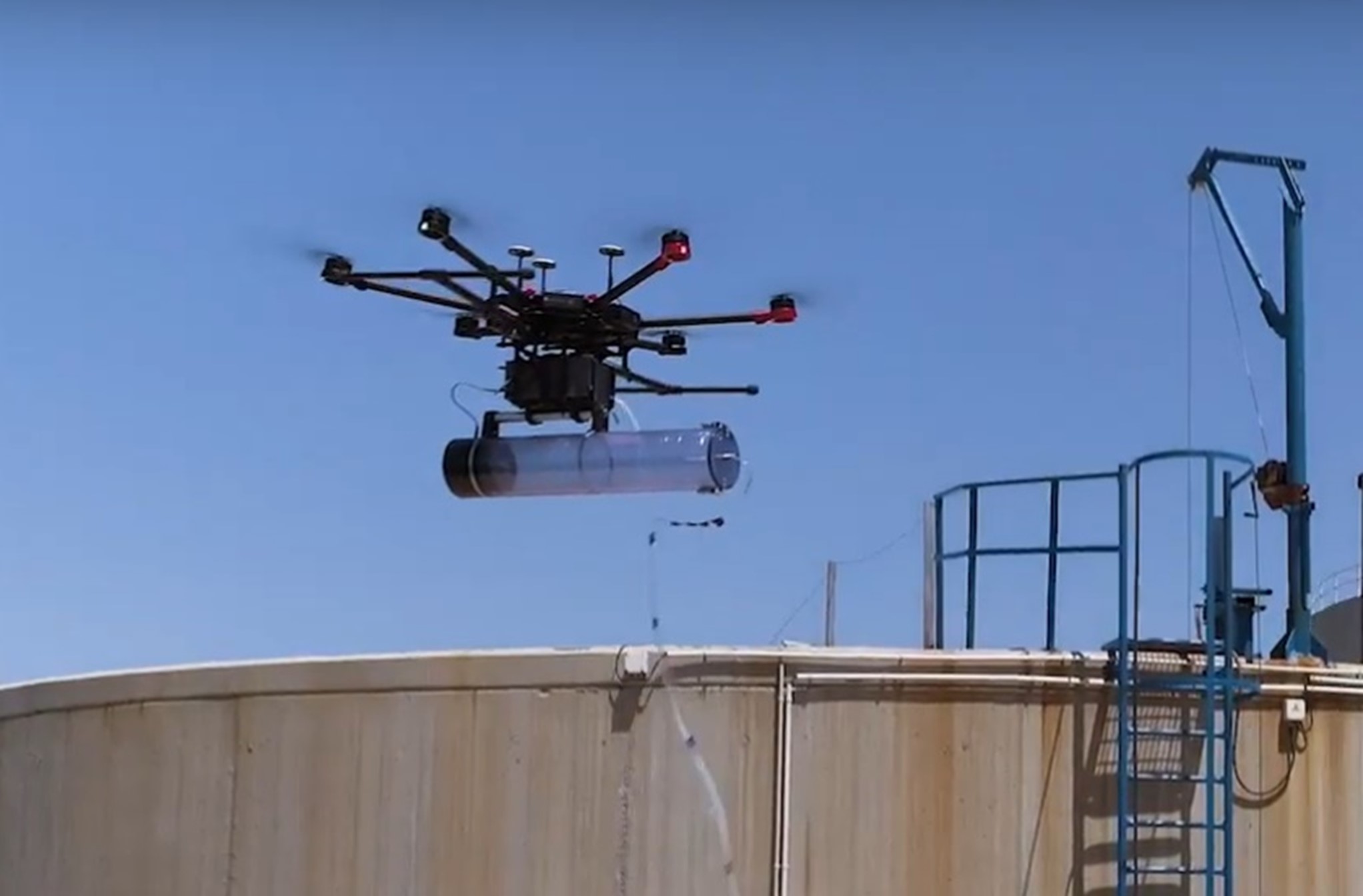
The bad odors produced by the Waste Water Treatment Plants, known as WWTPs, have become a growing concern in the cities and towns that host these facilities and are considered by citizens to be the main cause of the perception of pollution, along with the dust and noise.
Now, and thanks to a collaboration between the company Depuración de Aguas del Mediterráneo (DAM) and the Institute for Bioengineering of Catalonia (IBEC), a new way is being opened to detect and treat these odors.
According to the researchers, “the results obtained in the SNIFFDRONE project (Odor monitoring by drones for environmental purposes) are very positive and represent a significant advance in the field of odor management in the WWTP. The new system will help to take appropriate control actions and therefore improve the management of the plant compared to current practices “
This is how the technicians of the DAM R & D & i Department express themselves, when assessing the work carried out in this European research that ended on October 31st. Specifically, a drone has been developed capable of predicting “the odor concentration from the readings of chemical sensors and providing measurements that help to locate the sources of origin“, indicate from DAM.
The study, carried out together with the IBEC (Institute for Bioengineering of Catalonia) and which is part of the ATTRACT initiative (GA 777222, Horizon 2020 program of the European Union), starts from the reality that current odor evaluation methodologies use measurements infrequent olfactometric measurements that do not allow a precise characterization, so an effective monitoring of the plant cannot be carried out.
“The system provides odor concentration maps that help to take appropriate control actions and therefore improve plant management compared to current practices,” explain the researchers from DAM’s R+D+i department.
Investigation details
The drone is configured with an electronic nose made up of 21 chemical sensors, plus temperature, humidity and pressure sensors, in a miniature sensor chamber. It also contains a sampling system, GPS positioning, and connects to a base station for signal processing and data analysis in real time.
“The system has been calibrated and validated in real operating conditions through several measurement campaigns at the Molina de Segura WWTP (Murcia). The results obtained allow us to obtain a prototype capable of predicting the intensity of the odor of ambient air samples in real time and simultaneously collecting samples for analysis in the laboratory after the flight, which allows us to calibrate and validate the operation of the system ” , stand out from the Valencian water purification company.
“The developed drone allows, thanks to a combination of chemical sensors and artificial intelligence, to quickly assess the intensity of the odor emitted by a waste management plant in large areas that are sometimes difficult to access. This information is relevant for the plant operators with the ultimate goal of minimizing the impact on neighboring communities ”, declares Santi Marco, Head of the Group of Signal and Information Processing for Sensing Systems at IBEC and Professor at the University of Barcelona .
For all these reasons, the DAM Innovation department technicians consider that the results of SNIFFDRONE represent a significant advance in the field of odor management in WWTP, since until now “the odor detection robots had been tested with Single-odor chemical sources in relatively simple controlled scenarios and in most cases using ground-based robots ”, they conclude.
Reference article: Javier Burgués, María Deseada Esclapez, Silvia Doñate, Laura Pastor and Santiago Marco. Aerial Mapping of Odorous Gases in a Wastewater Treatment Plant Using a Small Drone. Remote Sensing, 2021.






